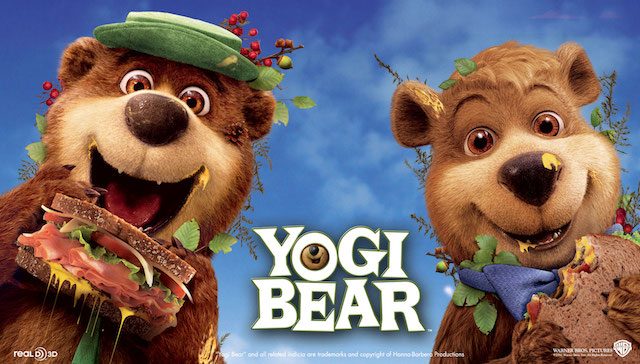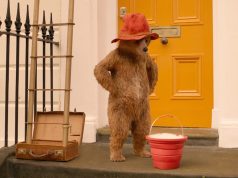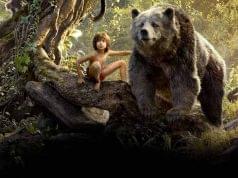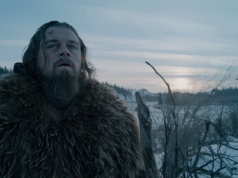
After seeing the trailer for the “Yogi Bear” movie (in theaters Dec. 17!), most people, once the weeping and despair have subsided, start to consider the scientific principles pertaining to the physical comedy contained therein. That is the subject we would like to examine in today’s lecture.
The trailer is embedded here for your viewing pleasure. Please watch it and take notes, then continue on to the article for our analysis.
https://www.youtube.com/watch?v=JeVcx03cEOw
A Scientific Breakdown of the Physical Comedy Presented in the ‘Yogi Bear’ Trailer
We disregard the first bit of physical action — Yogi waterskiing — because it does not seem to have been intended as comedy. We note, however, that Yogi is not only smarter than the average member of his species, but appears to be more agile and dexterous, too.
The first evidence of true slapstick comes when Yogi tries to steal a lunchpail by lowering a magnet down from the skylight. When the lunchpail is blocked by an obstacle, Yogi pulls too hard, breaking the magnetic bond and yanking the magnet back toward himself. The magnet acquires such momentum in its path upward that it knocks Yogi backward, off the roof and onto the ground, which is for some reason covered with scraps of paper that billow upward when Yogi lands. A fall from such a height, even one cushioned by an oddly but fortuitously placed bed of paper products, should injure Yogi, who, as an adult male bear, could weigh 400 pounds or more. While Yogi is quick to notify us that he is unhurt, the park’s veterinarian ought to examine him for internal injuries. Something should be done about the litter situation, too.
In the next scene, Yogi is catapulted by a rigged plank on a picnic table. Subsequent footage reveals this to have been a mechanism of his own devising, intended as a means of stealing picnic baskets. Surely Yogi could not have foreseen that a booby trap meant to launch simple picnic lunches would be powerful enough to send a full-grown adult male bear flying, too. Yogi will need to do some recalibrating after this test run, as a catapult that throws a 400-pound bear across a field would throw an ordinary 10-pound picnic basket much, much farther. Again, Yogi does not seem to have been injured by the stunt, despite being thrown spine-first against the trunk of a tree. It may be that, accustomed as he is to such misadventures, Yogi has trained himself to completely relax his body when injury is imminent, thus reducing the effect of the impact.
Next, Yogi performs a classic spit take, again proving himself more nimble than his fellow bears, who would lack the musculature and coordination to propel fluids from their mouths in such a Dick Van Dyke-ian fashion. Immediately after this, Yogi is smacked in the head by a tree branch that has been pulled back and let loose. Though the branch is not very thick, it strikes Yogi with such force that it flattens his skull. The bones in a bear’s head being thick and rigid, the only possibility here is that the tree branch has shattered them, no doubt causing serious brain injury and perhaps death.
We are then subjected to images of Yogi and Boo-Boo dancing all sexy-like with Ranger Smith. This being too horrible to contemplate, we shall purge the notion from our minds.
We return now to the booby-trapped picnic table. As our previous calculations predicted, the picnic basket flies way past its intended mark. Curiously, two seconds later, a pie arrives, hitting Yogi square in the face. This pie cannot have come from the same picnic basket that went off target, coming as it does so much later and to a different destination. Was a second plank on the picnic table likewise rigged, sending this additional projectile after the first one? On the other hand, it is possible that the pie was in the first payload but somehow became separated from the basket in mid-flight. Theoretically, the pie’s aerodynamic shape could have caused it to catch an air current that would both delay its arrival and change its course. We consider this to be unlikely, however, and we reject the theory until further facts become available.
Yogi and Boo-Boo then decide to entertain the park’s visitors with what Yogi calls “razzle-dazzle.” What form this “razzle-dazzle” was meant to take is unclear. We know, however, the plan did not allow for Yogi to set himself on fire while waterskiing, bounce off an inner tube, and soar over a fireworks display, as this chain of events causes Yogi to remark that “too much razzle” has been deployed. Whether the amount of dazzle, either too much or too little, was a factor, is unknown.
The bears’ next plan involves a makeshift hang-glider. Here, at last, there is some common sense being employed: Bears cannot fly on their own; ergo, if it is necessary to reach a great height or travel a great distance in a short amount of time, they must construct a flying machine out of the implements commonly found in national parks, including wood, pulleys, and wheels. The contraption fails to perform as intended, but we believe this is due not to any design flaws but rather to the aviators’ lack of flight experience.
The trailer’s final sequence has Boo-Boo and Yogi attempting to board a moving train, for reasons that our imagination is not fertile enough to conceive. Boo-Boo, the smaller and more agile of the two, has already gotten aboard. Yogi, running alongside the train, bashes his face against a sign; his skull, already soft and gelatinous from the tree-branch trauma, barely registers the injury. Yogi’s ample rump is then bounced along a fence made of wooden posts as Boo-Boo tries to pull him head-first into the car. We know from toilet-paper commercials that bears’ rear ends are surprisingly delicate and sensitive, so we assume the pain of this mishap is — pardon the pun — un-yogi-able.
— Film.com




